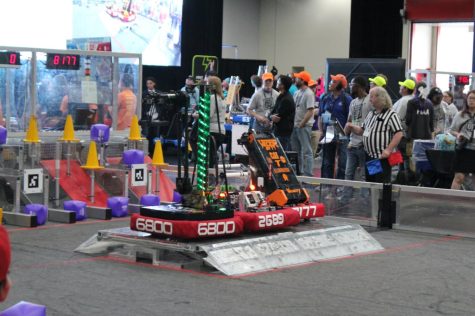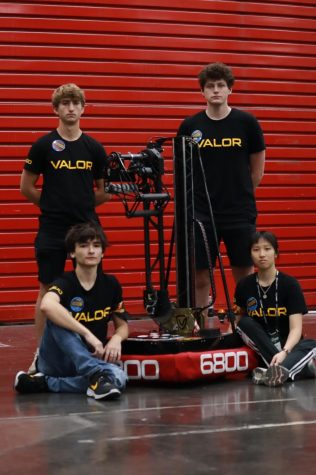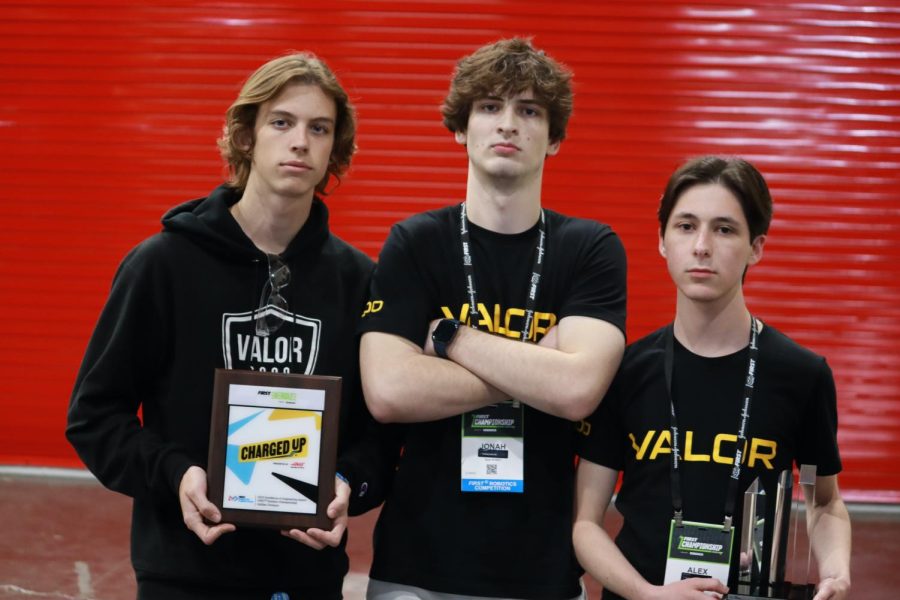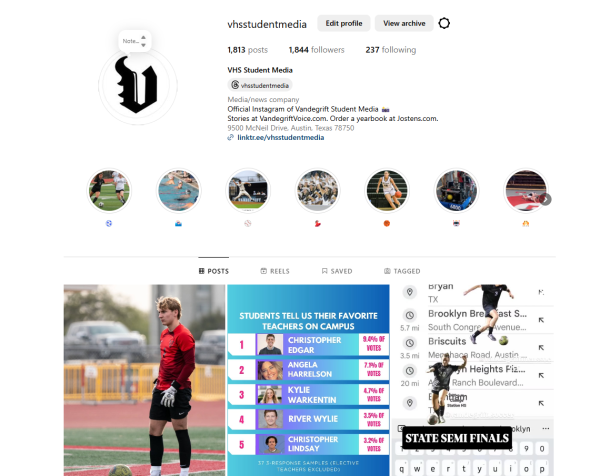Robotics teams compete in FIRST Championship
Senior Valor members including Travis Williamson and Jonah Sims recieve awards at the FIRST Championship.
May 8, 2023
FIRST Robotics Competition (FRC) team 6800 Valor and FIRST Technology Challenge (FTC) team 6299 QuadX, competed in the global FIRST Championship, in Houston on April 18-22. QuadX placed 17 overall and four in the teleop division. Semi-finalist, Valor, placed six, an improvement in comparison to their rank of 24 last year.
FIRST Championship is a four-day robotics competition held annually in April, in which FIRST student robotics teams compete, showcasing their refined skills.
“Getting to talk to other teams and people from around the world and see[ing] what everything is like for them [was] cool,” junior and QuadX member Manav Karonde said.
Vandegrift has 10 FTC teams, QuadX was the only group that qualified for worlds this year. And, a single FRC team. The FTC teams have around 10 members each and highlight leadership amongst students, while the FRC team has subteams with a total of approximately 40 members to represent the technology production industry and emphasize teamwork and cooperation.
“Everyone has so many different perspectives on an issue, so seeing everyone’s ideas is my favorite part of working in Valor,” sophomore and Valor member Neha Kunka said.

The eight subteams of Valor include computer-aided design, fabrication, build crew, robot drive and operation, scouting of other teams’ performances, alliance partner selection based on scouting of data and marketing through social media outreach in the community. Veteran team members are often given mentorship roles to help rookies, especially freshmen, on their teams.
“We had a lot of veterans from last year, but also our mentors are really helpful [regarding] learning and prototype,” freshman and Valor member Zaeem Alam said. “Whenever we have a failure during our build season, the mentors are there to support us.”
FTC teams don’t have as many roles because their challenges require smaller robots on a smaller playing field of 12×12 feet. With game assignments varying each year, the teams were newly instructed to compete whilst in an alliance with one other robot. Their task- try to place cones on top of varying junction sizes, or pole-like structures.

“We wanted to experiment with making a modular robot, so we decided to try doing a fully 3D-printed drivetrain, which isn’t exactly a super novel concept, but it’s not something that’s been tried to this extent,” Karonde said. “And, it ended up working out pretty well. We also went for making a very custom robot, which means that rather than ordering a lot of metal, we fabricated our own parts.”
Similar to QuadX’s investigation of new robot developments, in preparation for worlds, Valor created a subteam, Everbot, responsible for building another robot that would play with their competition robot in order to observe faults prior to the tournament and help drivers practice.
“Preparation [consisted of] everybody making sure our robot was up to speed, [including] making new changes based on our last competition,” Kunka said. “And, business did a lot more outreach for worlds.”
International teams arrived for the event, flooding competition platforms. And, several companies advertised their own technological innovations, notably the 3D-printing of organs for surgeries.
“I don’t know if I could say I would change anything about the team’s performance,” Karonde said. “We did really well and when you get to that level, there’s just so many absolutely incredible teams.”







